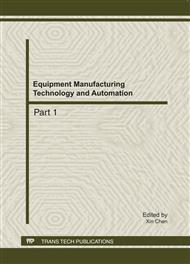p.410
p.414
p.418
p.423
p.429
p.436
p.440
p.446
p.451
Modification of Microstrucure and Residual Stress on Friction Welding Surface of Titanium Alloy by Water-Jet Cavitation Peening
Abstract:
Water jet cavitation peening is applied to improve the strength and mechanical properties of the friction-welded joints of titanium alloys. Scanning electron microscopy observations of the microstructure of the welded joints and welded area before/after water jet cavitation peening confirm slip dislocation at the microstructure near the surface of the specimens. The residual stress on the surface of the welded joint is measured by X-ray diffraction. The results indicate the effect of peening time on the strength of compressive residual stress.
Info:
Periodical:
Pages:
429-435
Citation:
Online since:
August 2011
Authors:
Keywords:
Price:
Сopyright:
© 2011 Trans Tech Publications Ltd. All Rights Reserved
Share:
Citation:


